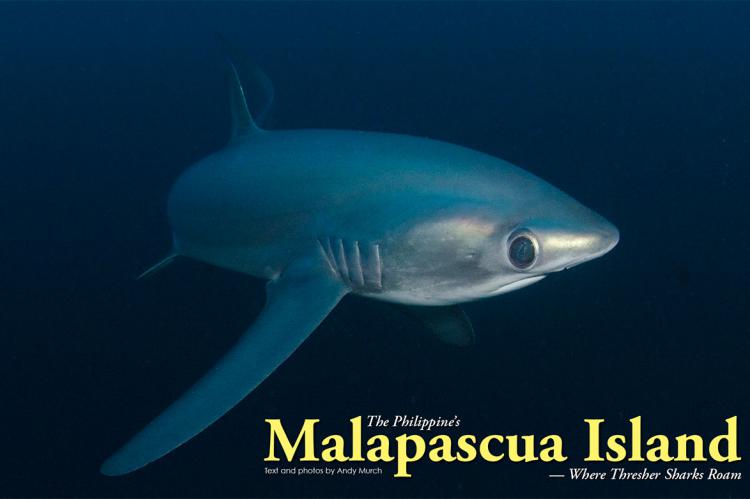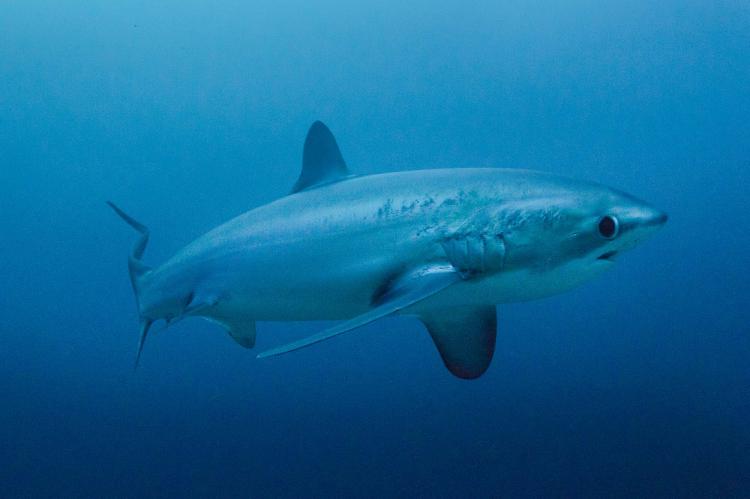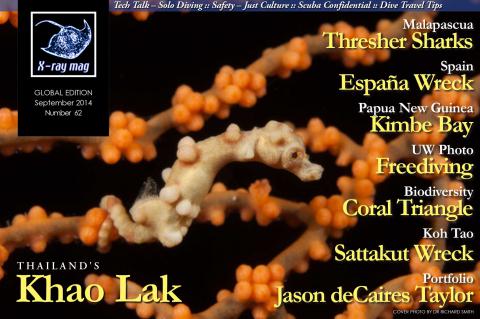Malapascua Island: Where thresher sharks roam
As picture perfect as Malapascua is, in a nation of 7,107 palm tree fringed islands, 2.5km long Malapascua wouldn’t be on anyone’s radar were it not for the thresher sharks that treat the island like a spa. Each morning as the sun peeks over the mountains on distant Cebu, Pelagic threshers rise from the depths to be cleaned by reef fish along a deep ledge known as Monad Shoal.
Tags & Taxonomy
When my plane touched down in Cebu City in the central Philippines, the ground had barely stopped shaking from a catastrophic earthquake that rocked Bohol and Cebu causing severe property damage and loss of life.
From the media reports that I saw en route, I was expecting total chaos, but Filipinos are used to the occasional quake and no one that I met seemed particularly phased by the tremor that registered 7.2 on the Richter scale. When I reached Malapascua Island, there were no signs at all of earthquake damage, and before long, I completely forgot about the possibility of more violent tectonic shifts.
Monad Shoal
At 6:00am, a dozen Filipino dive boats form a ragged line along the edge of the drop off. I sit quietly in the dawn glow, waiting for the sun to rise high enough to begin the first dive of the day.
The key to close encounters at Monad Shoal is to dive (and shoot) without artificial lights or camera strobes. Threshers have extremely sensitive eyes that are designed for hunting prey in the half-light. Understandably, they do not respond well to flash photography and will bolt at the first sign of a bright light.
Around 6:30am, I join the ranks of bleary-eyed divers slipping below the waves, and descend through clear water to a steep sandy slope at 80ft/24m. When my eyes finally adjust, I see that the lower edge of the slope takes a sharp downturn and plummets past a series of deeper ledges into liquid night. To my right, a coral spur (covered in cleaner fish) juts out from the slope but it is devoid of sharks so we swim on.
As we approach the next cleaning station, Tata—my eagle-eyed divemaster from Thresher Shark Divers (TSD)—gives me a ‘halt’ signal the points insistently along the slope. Straining my eyes in that direction, I drop to the sand and try to look small and nonthreatening.
When the first thresher materializes, there is nothing obviously predatorial about its demeanor. As it snakes past me, the 3m long animal seems confident and nervous in equal measures; an accomplished deepwater hunter forced out of its comfort zone by the need to rid itself of parasites.
Thresher sharks spend much of their lives in the open ocean hunting schooling fish. Over time, they accumulate copepods, sea leaches and various other parasitic organisms that irritate their skin, especially around their vulnerable gill openings and on the trailing edges of their fins. Cleaning stations like the ones at Monad Shoal are a critical part of their (...)
Download the full article ⬇︎

Originally published
X-Ray Mag #62
Diving Thailand's Similan Islands at Khao Lak; Papua New Guinea's Kimbe Bay; Malapascua Island's Thresher Sharks in the Philippines; The Coral Triangle's Biodiversity; Spain's España Wreck; HTMS Sattakut Wreck at Koh Tao Island; Just Culture; Scuba Confidential; Diving Solo; Freediving for Underwater Photographers; Evie Dudas profile; Interview with artist Jason deCaires Taylor; Plus news and discoveries, equipment and training news, books and media, underwater photo and video equipment, shark tales, whale tales and much more...






























